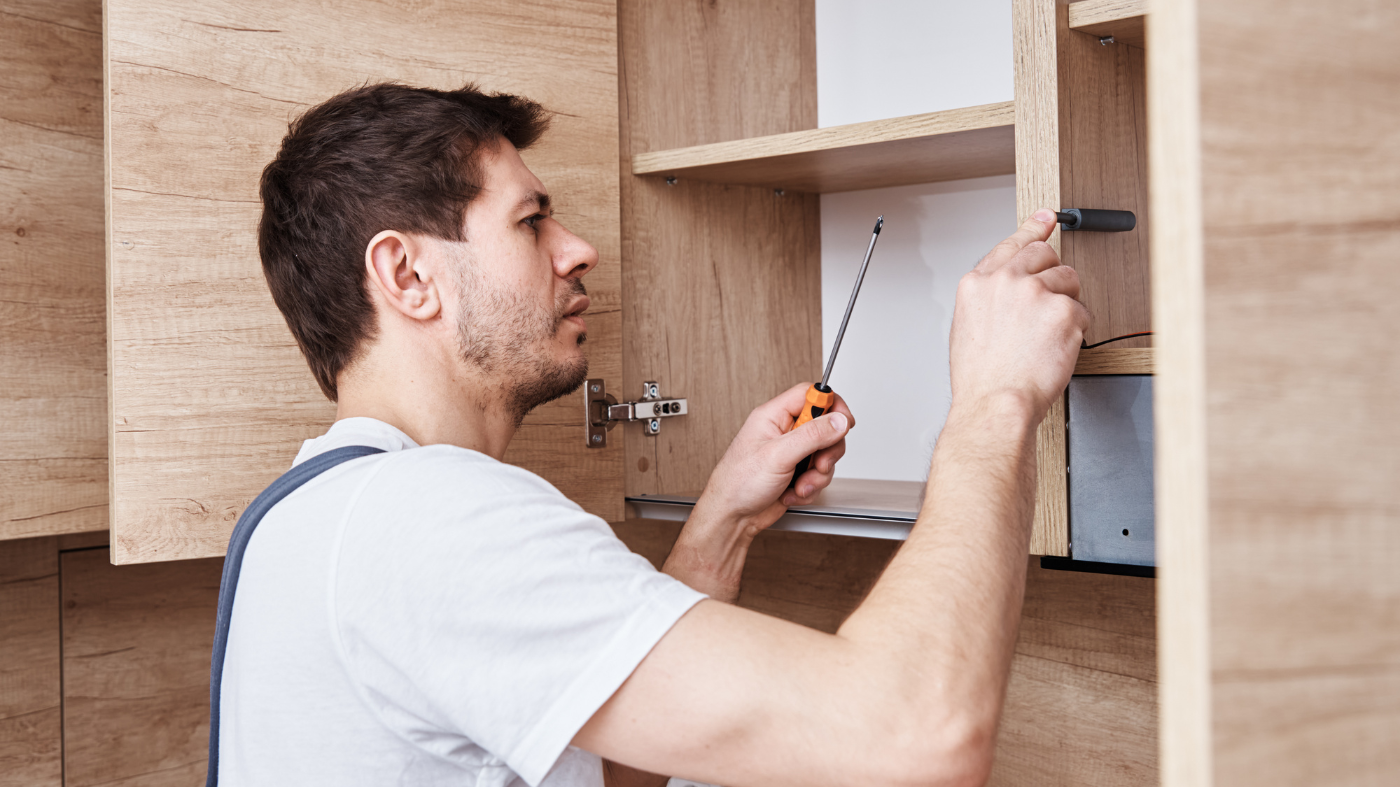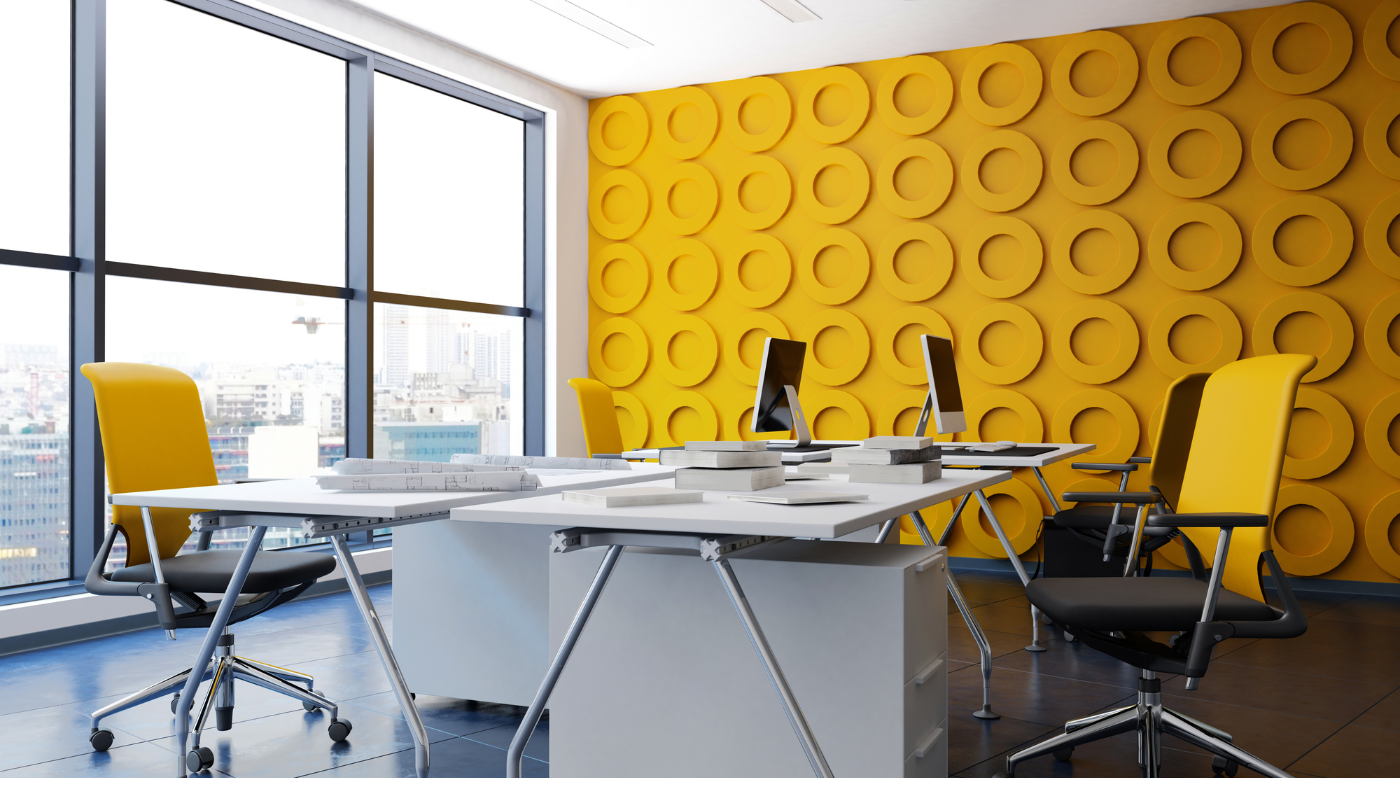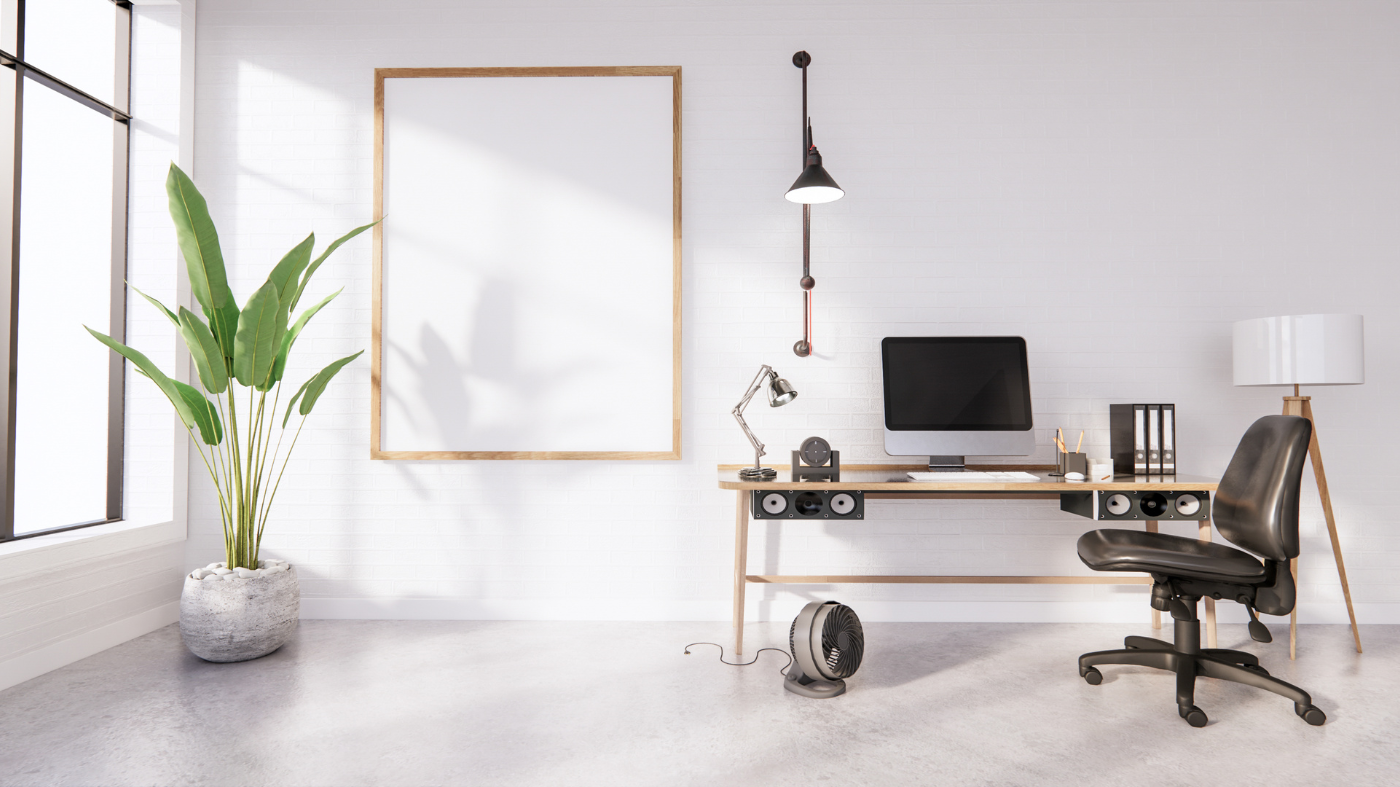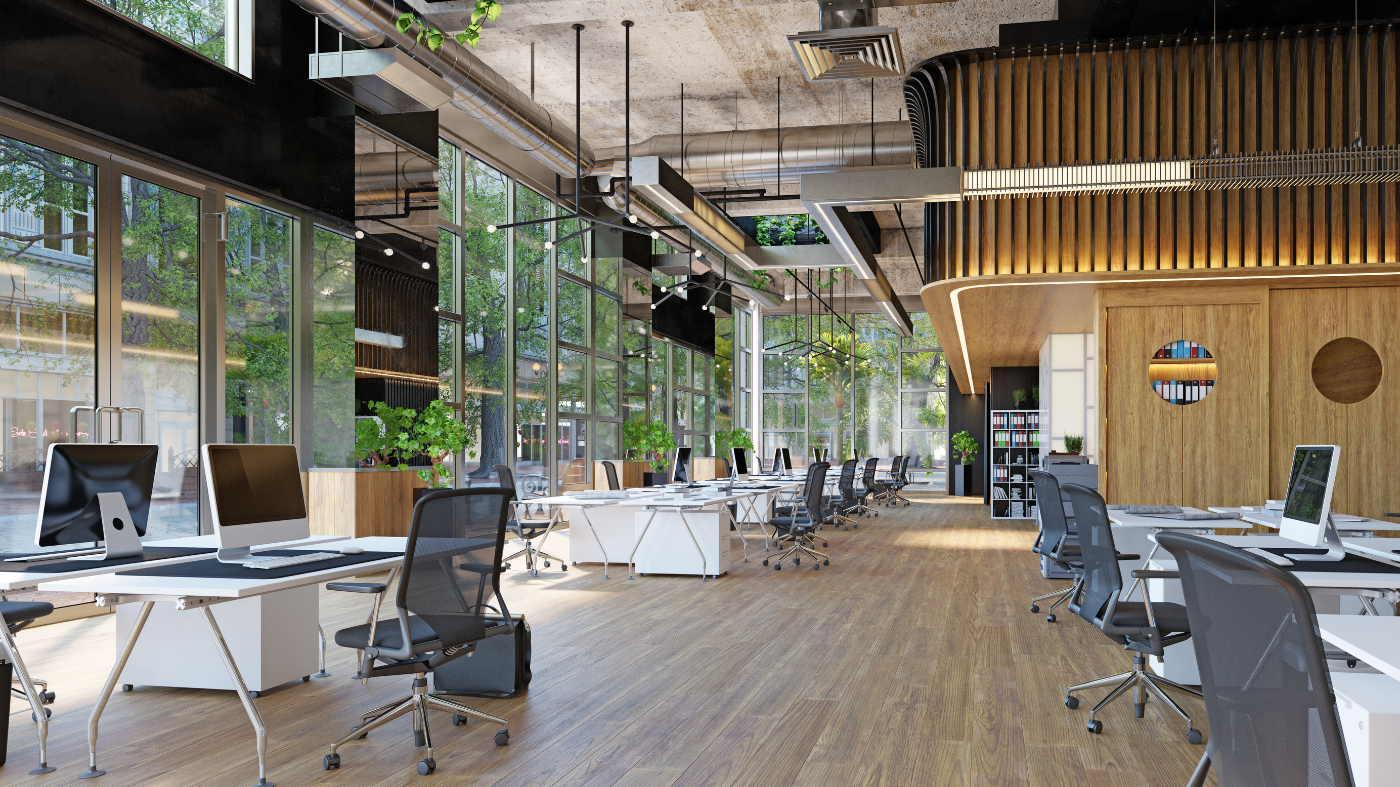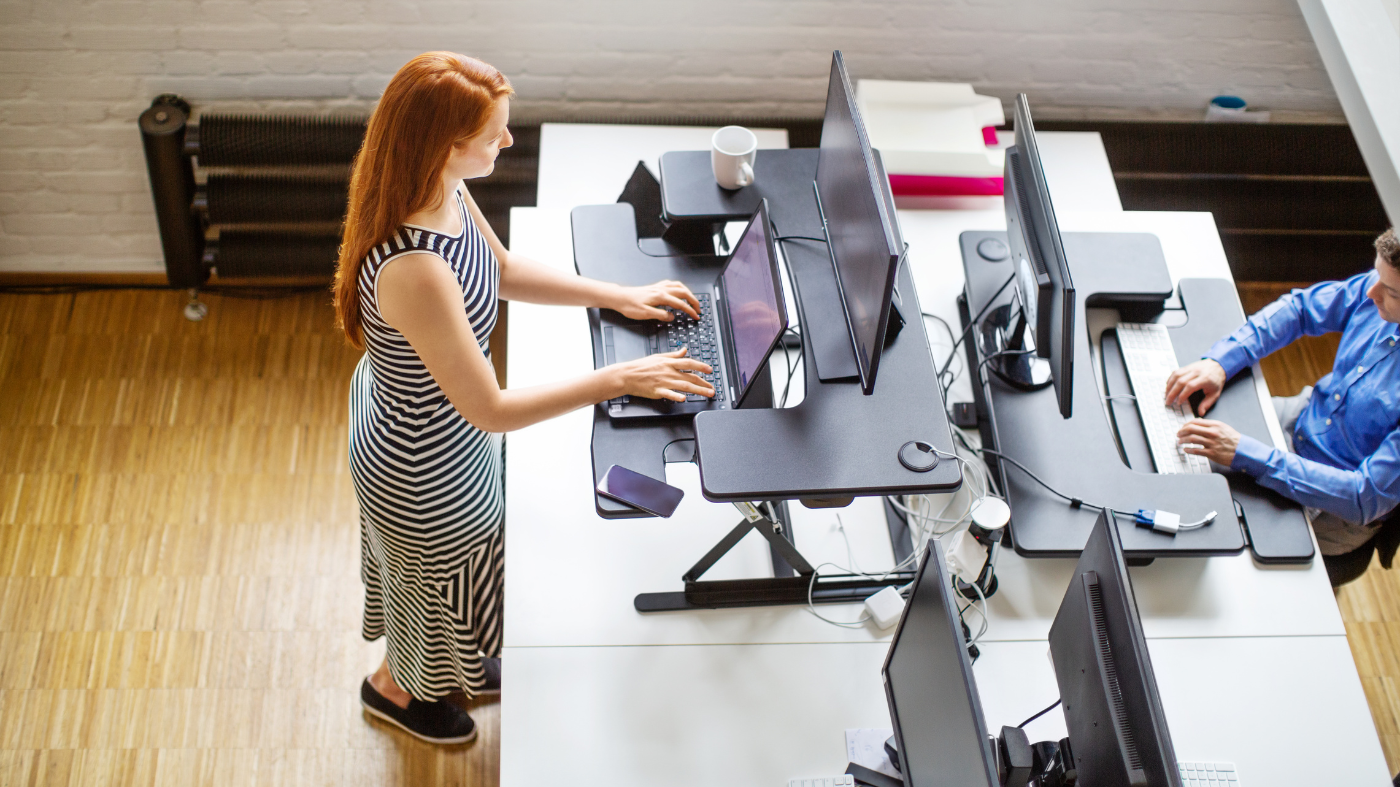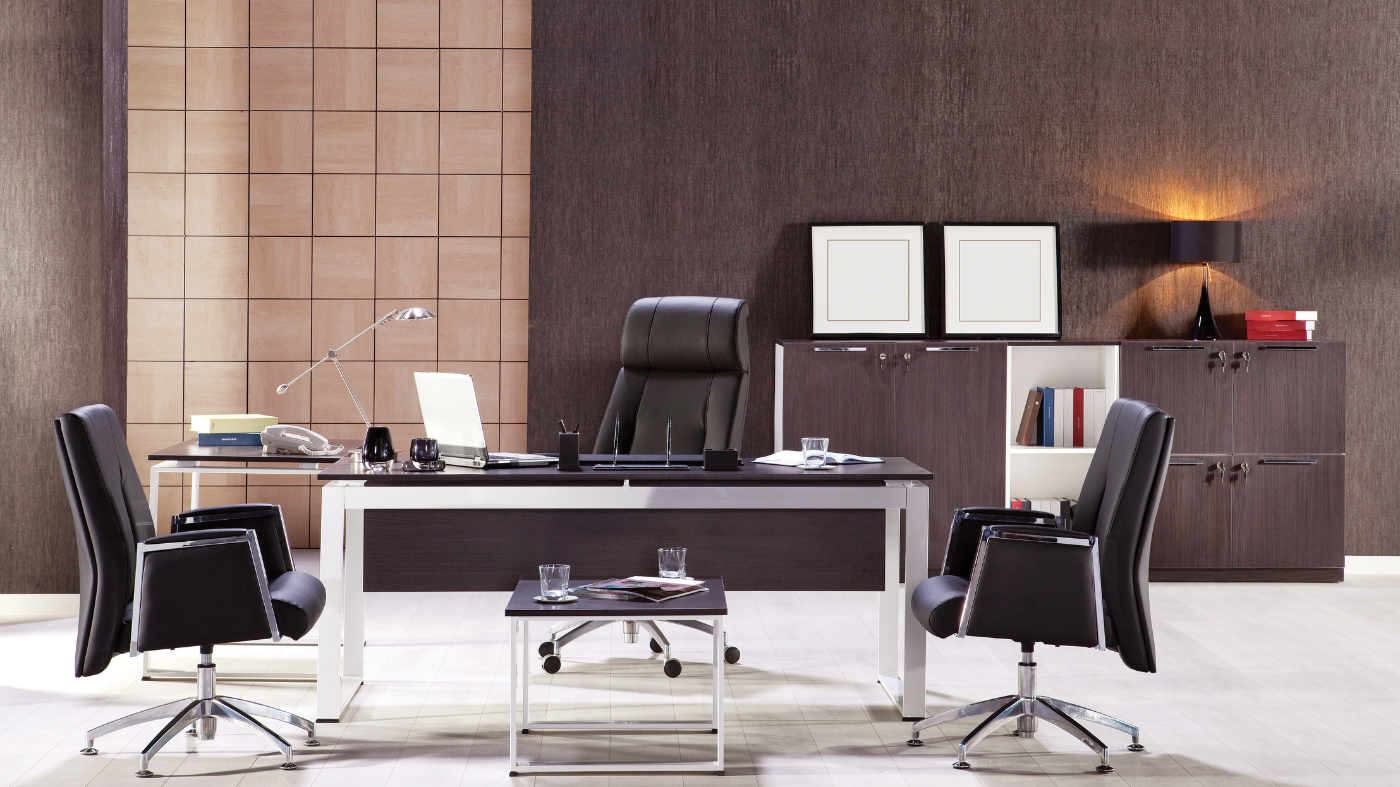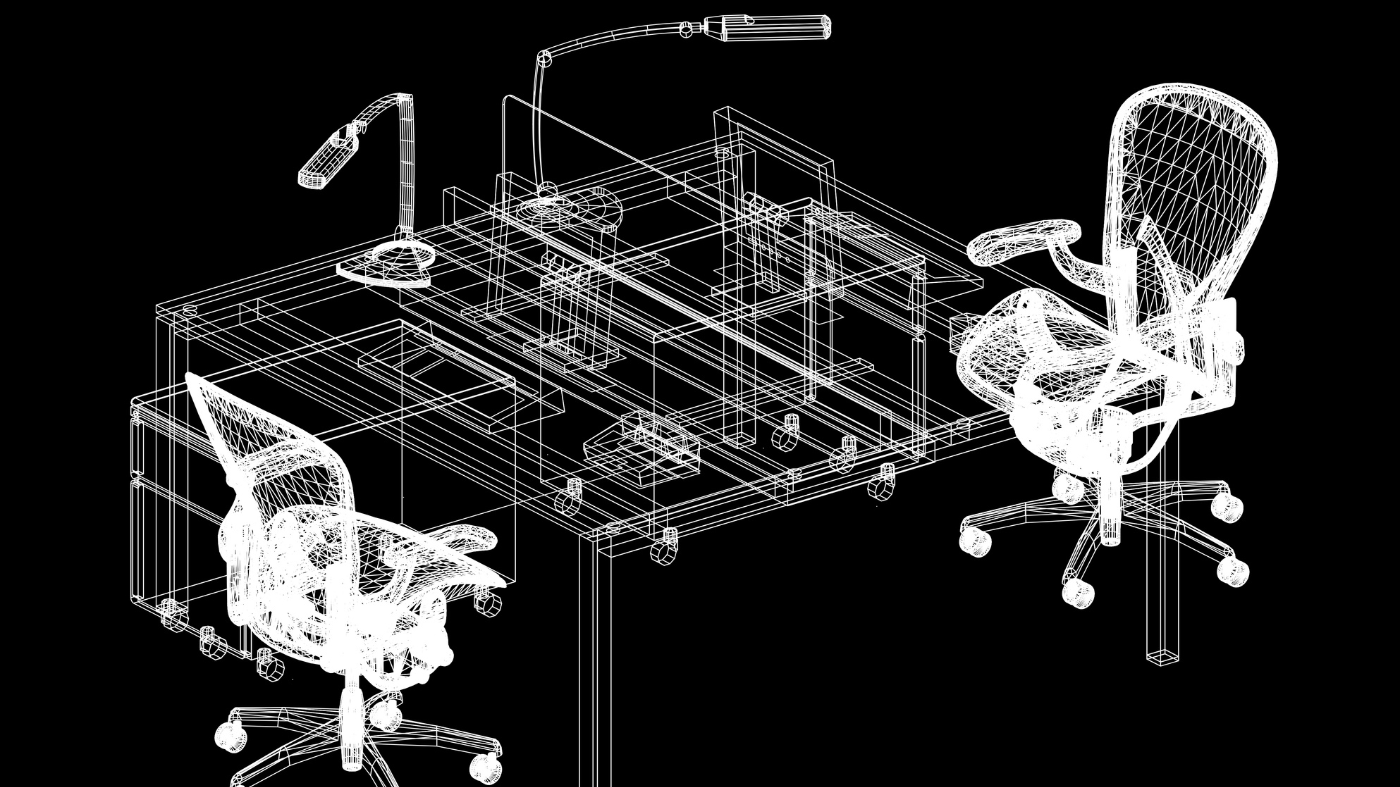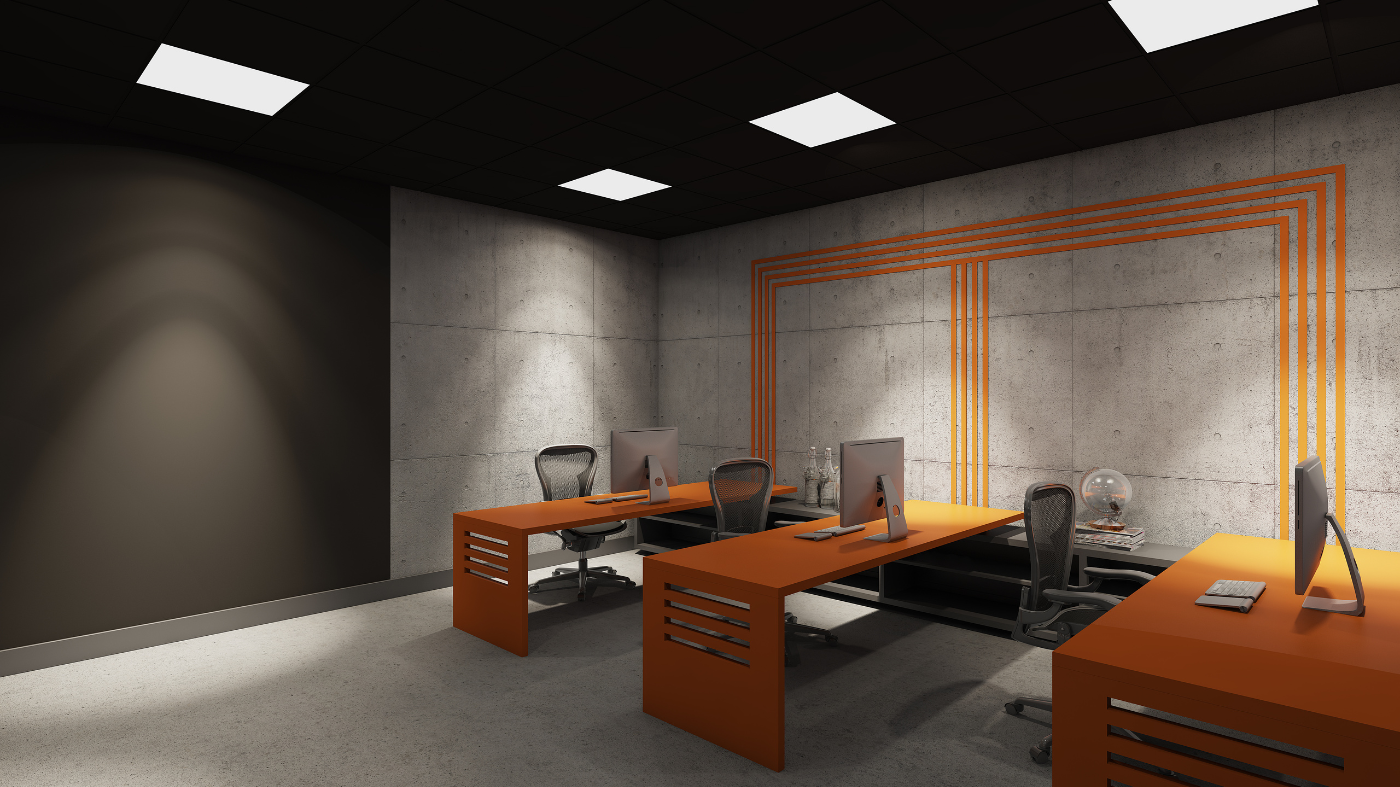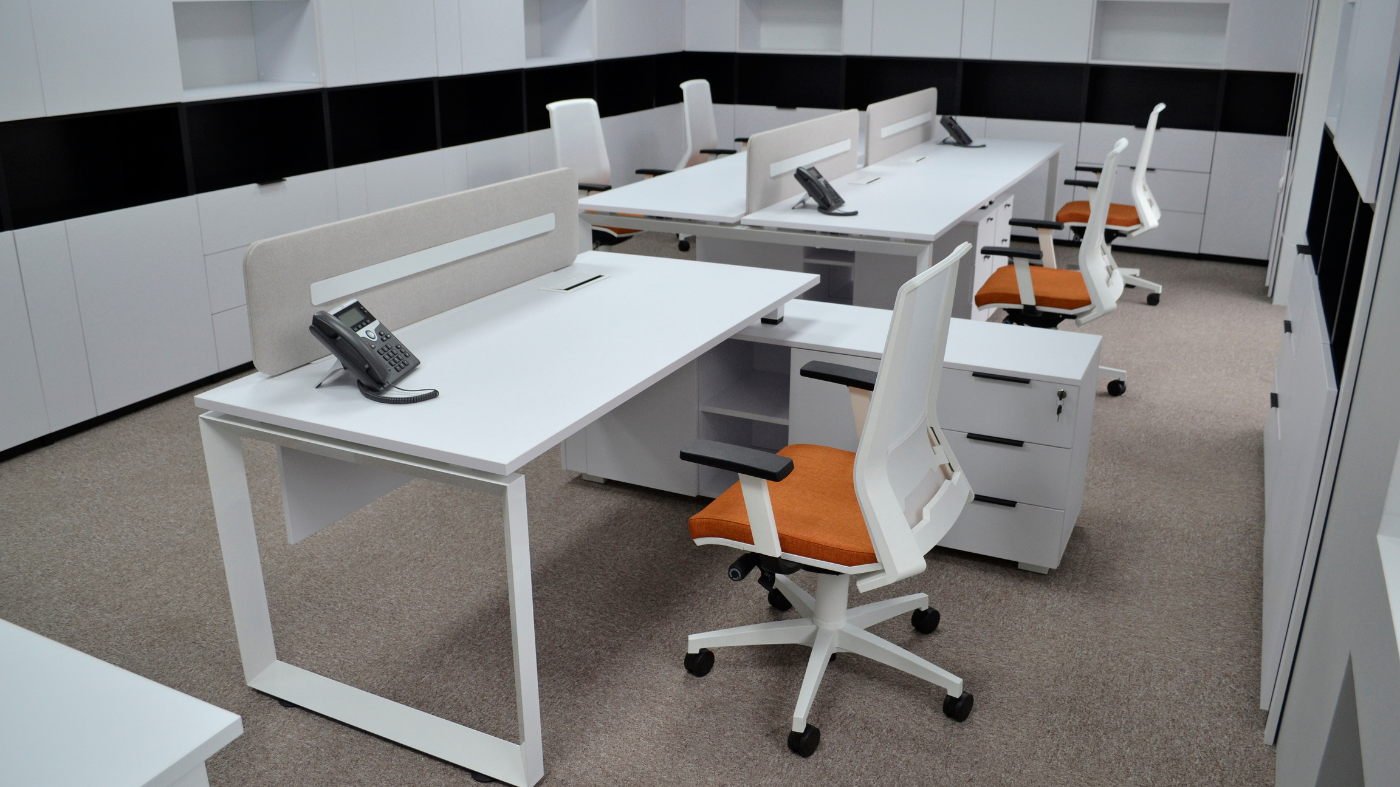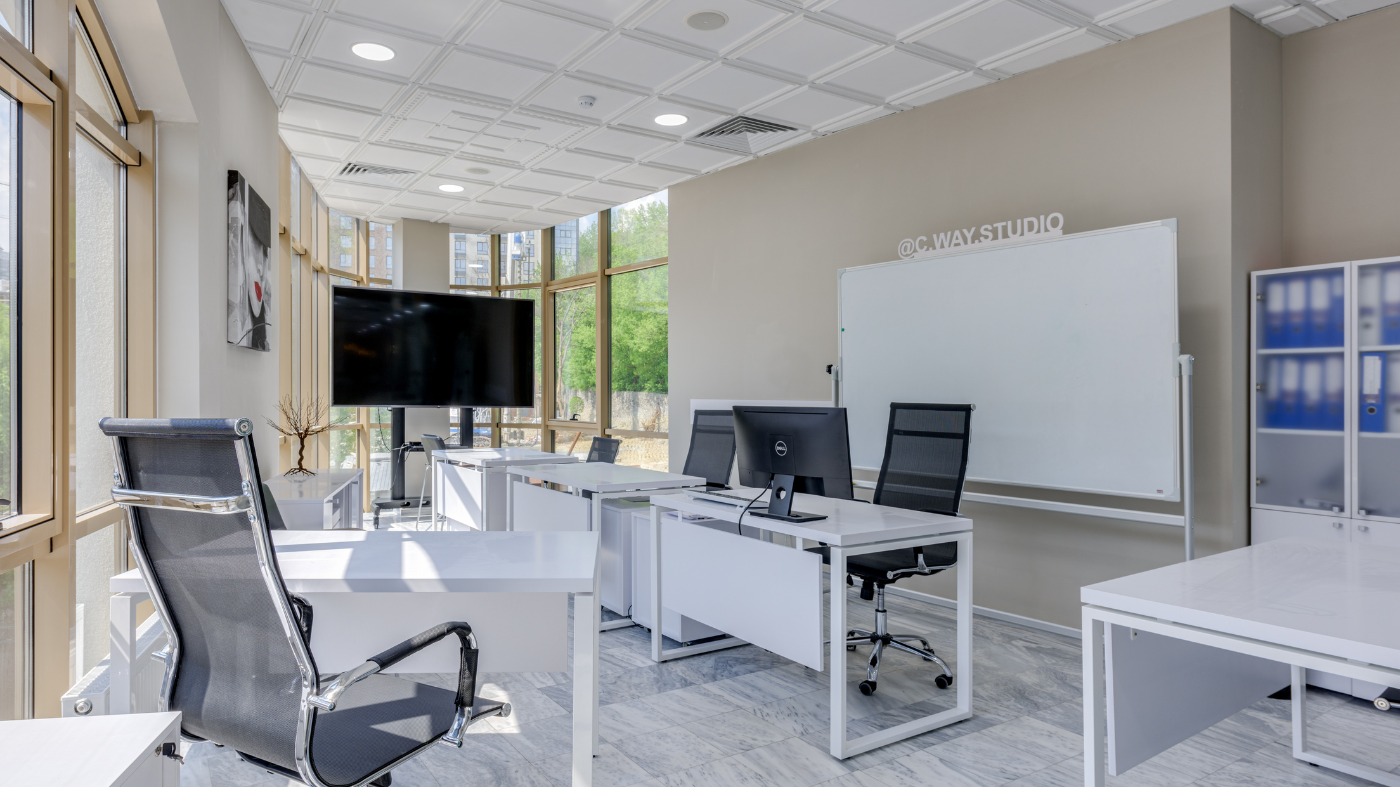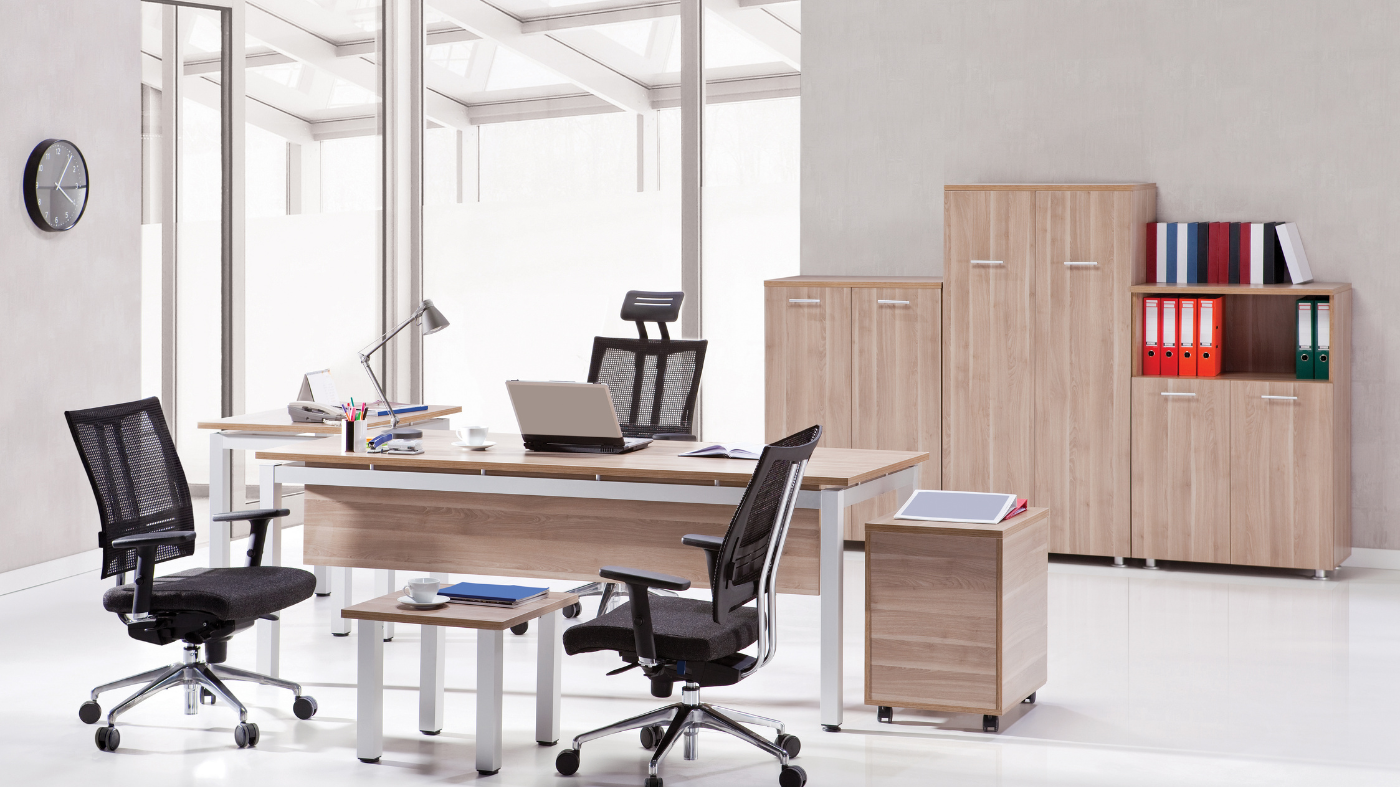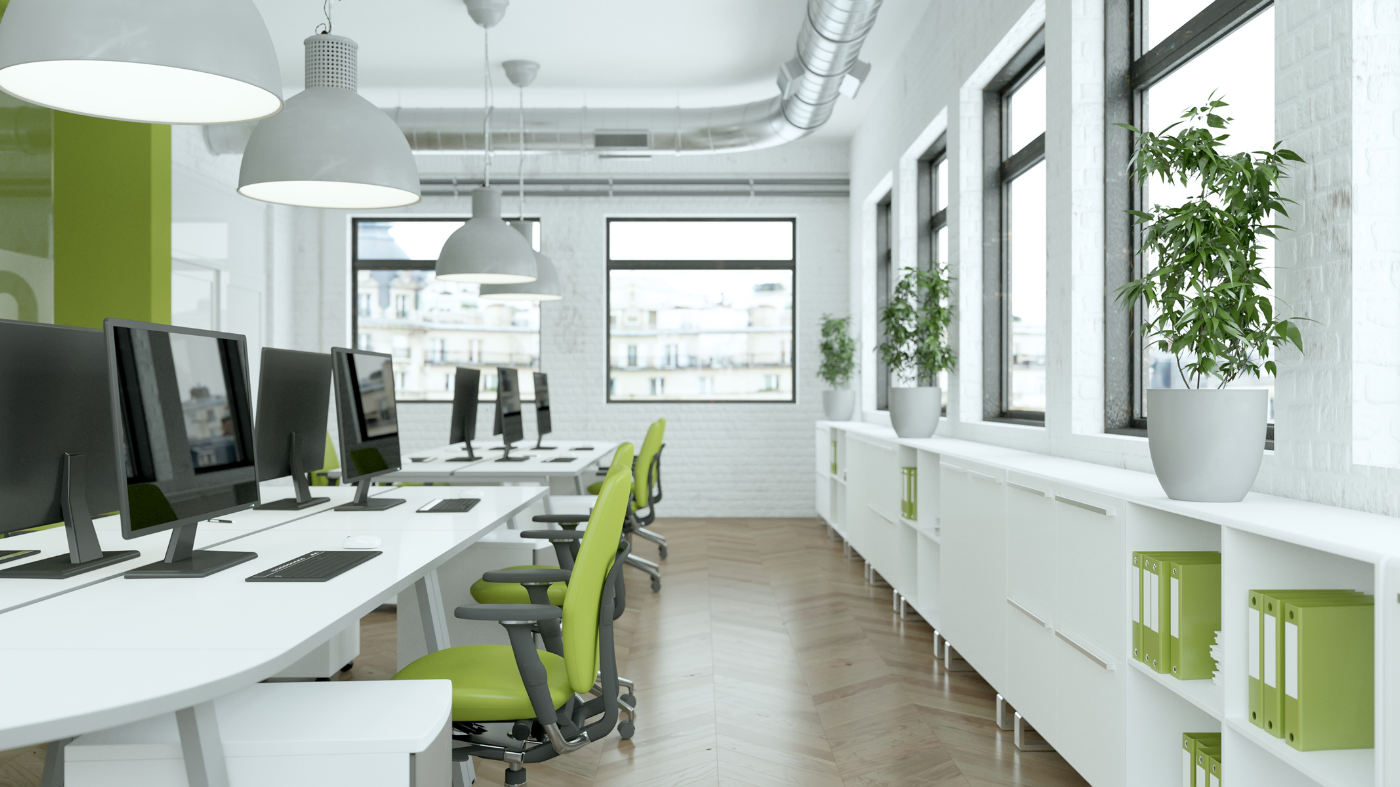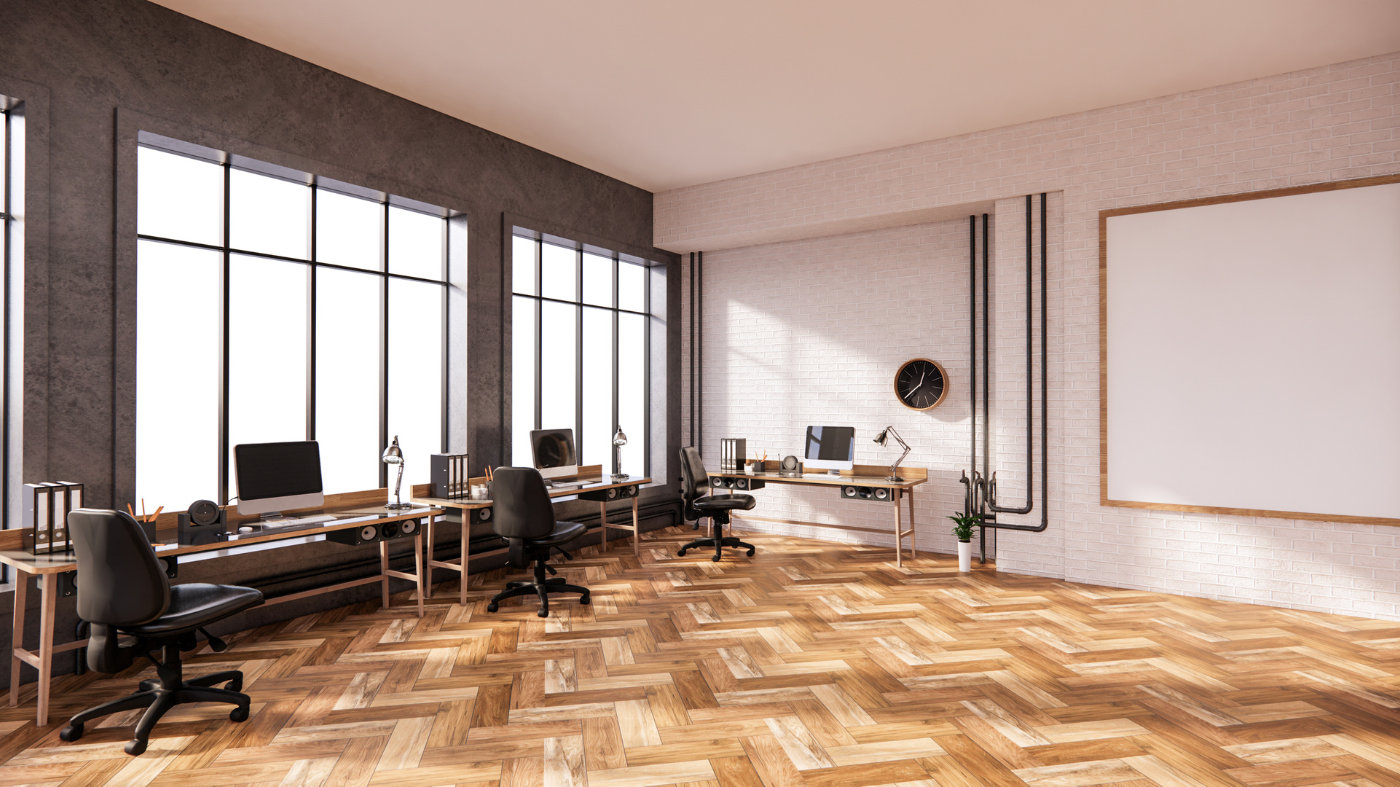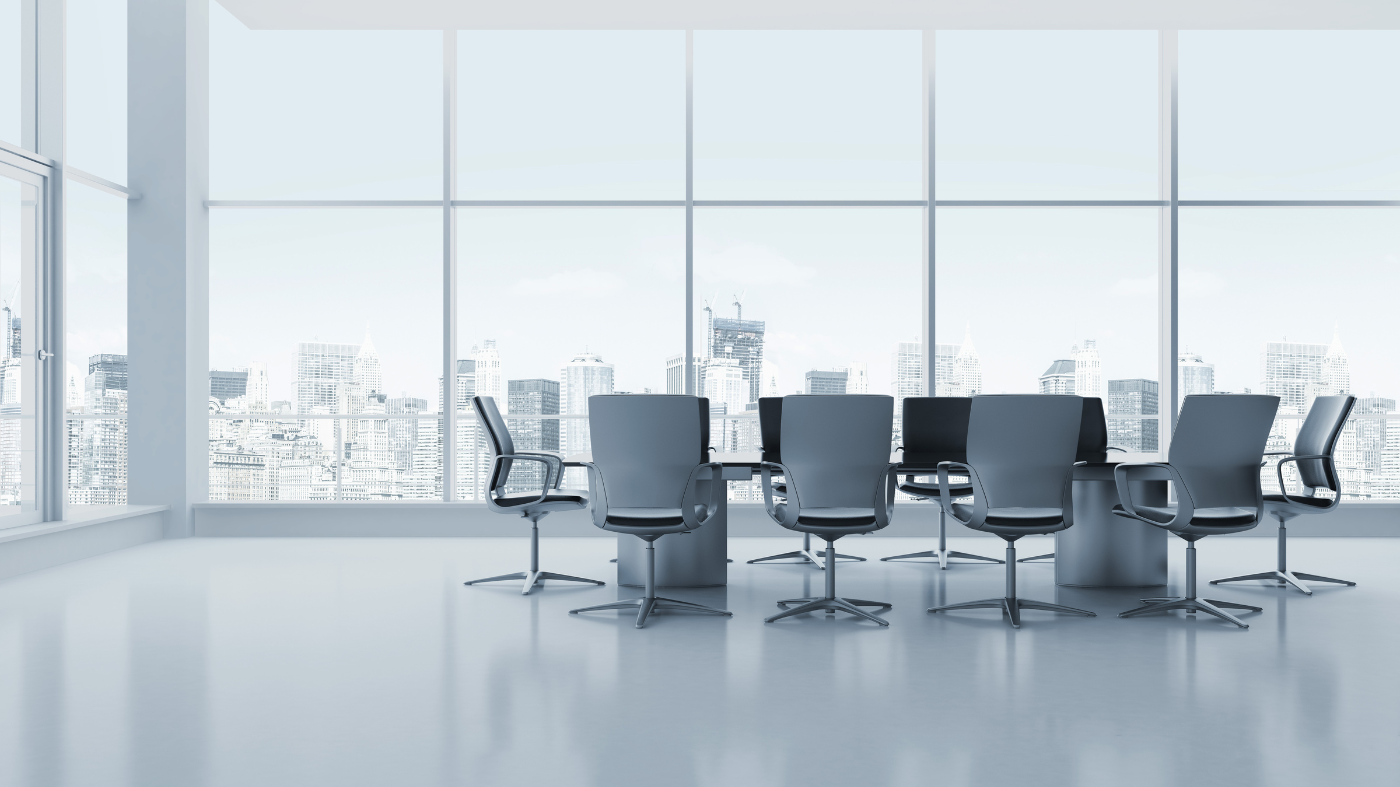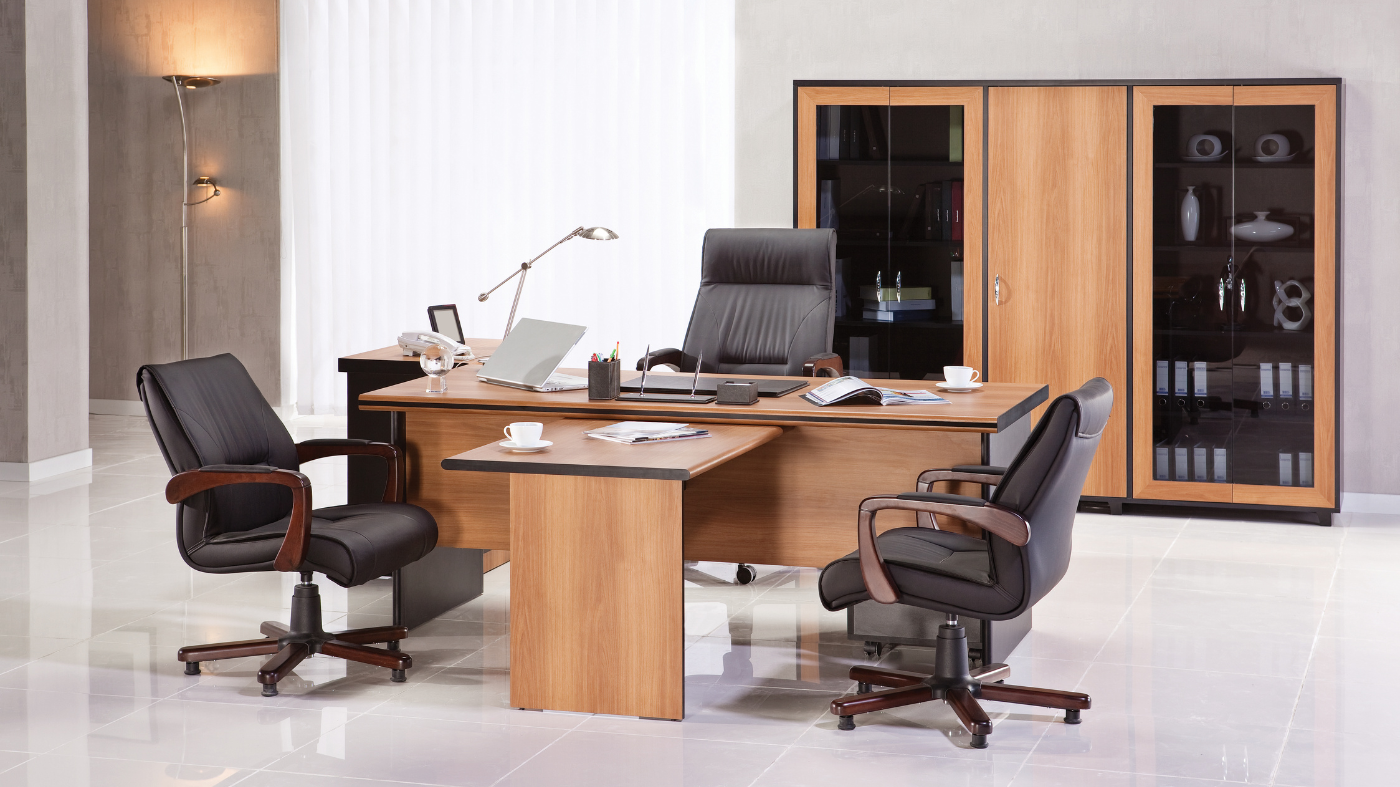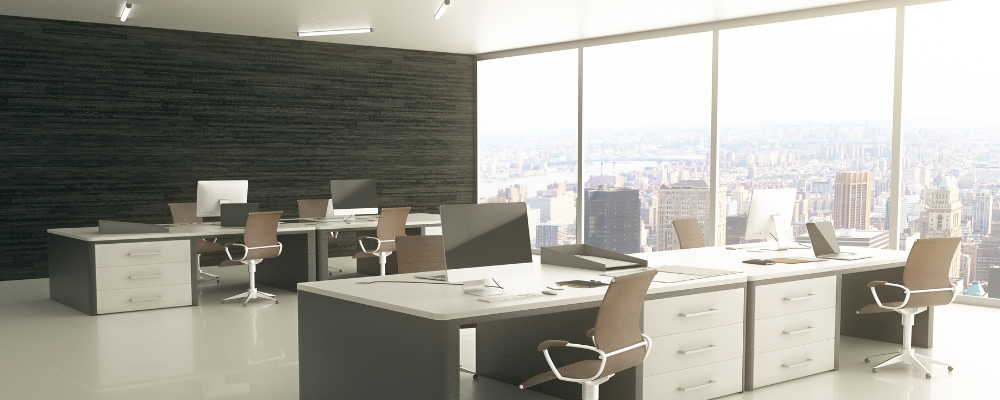Designing a new workspace comes with a unique set of challenges and considerations. Whether you’re starting from scratch, leasing a new space, or renovating an existing location, there are several aspects you should take into consideration before diving into designing the new space.
For example, when designing your new workspace, consider the delicate balance between practicality and aesthetic decisions. This balance will exist in every aspect of your design including layout, furniture selection, lighting, the flow of the workspace, decor, and even the appropriate temperature.
An additional consideration is the amount of time you will spend in this new workspace. An average worker spends more time at work than at home. In our new post-pandemic world, the reality for many is a hybrid work environment where it’s important to strike an adequate parallel between carving out appropriate workspaces at home and ensuring your workspace outside the home fosters productivity and efficiency.
If you’re interested in designing a new workspace that is practical and aesthetically aligned with your taste, you found the right place.
This post will cover:
- Appropriate layout for your new workspace
- Workspace retreats
- The right seating arrangement
- The flow of your new workspace
- Lighting for each space
- Decor considerations
- Temperature for your new workspace
Designing Your New Workspace Layout
The first aspect of designing the new workspace you should consider is the layout of your space. This is likely the least exciting part of designing your new workspace, but it’s an important consideration nonetheless.
Whether you’re setting up a new workspace in an area of your home or looking to design an off-site location, take time to evaluate the floor plan. Consider the following questions:
- Where is the primary source of light? Is there a window?
- How many power outlets does the space have? Where are they located?
- How much space do you have to work with?
Once you answer these basic questions, the next step is to determine the functionality of the space. This phase is the linchpin to designing your new workspace.
The questions you answer in this phase set the stage for the more aesthetic choices you’ll make down the line. Consider answering the following:
1. Do you want your new workspace to be private or open for collaboration?
If you want a private space, you may want to consider a separate area for accommodating colleagues or clients. Equally important to consider is adequate space for solo work. How much physical workspace do you need to be effective at work?
2. What are the furniture basics you need in the space?
We’ll cover what you need to know about furniture in another section. For now, make a list of your necessary furniture pieces, such as an area for your computer, a separate desk for laying out your materials, a bookcase, a conference table, or a coffee table for a unique meeting area.
3. What type of filing system do you anticipate needing for adequate storage?
If you primarily work in a paperless environment, you should still consider adding a small filing system to keep essential paper-based materials at hand.
4. Do you require a printer/copier or other large office equipment?
Printers come in all shapes and sizes, and even if you don’t need a more robust piece of equipment, you should consider where a desktop printer will live in your new workspace to not interrupt the flow of your space.
5. Are you interested in extra comforts like a small refrigerator, microwave, or coffee maker in your space?
These creature comforts are by no means necessary to add to your new workspace design, but they nevertheless allow for long periods of focus and a natural meeting place for colleagues.

Designing A Workspace Retreat
Designing an area of retreat for yourself in your new workspace will vary depending on the layout of your new workspace and whether you have decided to design a private or more collaborative working environment.
If you’ve decided to design a more exclusive workspace for yourself, you must consider what an area of retreat would look like to you. If you primarily work at your desk, a retreat might look like a pair of custom-designed armchairs and a coffee table where you can prop your feet up to read the latest company report. Adding variation to your workspace seating options provides a respite from sitting long hours in the same position.
If designing a collaborative workspace is more your style, consider including a large custom conference table. With space for you and your work colleagues to spread out and debate new ideas, you’ll find an inviting gathering space is just the thing you need to make progress on your latest project. Then, once the team has dispersed for the afternoon, you are free to move back to your desk and get to work on more solitary tasks.
Whatever your preference, designing a workspace with a comfortable retreat in mind provides the best of both worlds; a place to put your nose to the grindstone and another area where you take a step back and examine the project from a different angle.
Seating For Your New Workspace
Despite knowing the dire statistics, most workers spend 15 hours sitting at their desks. Whether it’s good for our health or not, the reality is we spend much of our working days sitting at work. Given this information, it’s only natural that you should carefully consider your seating options when designing your new workspace.
You may already be familiar with ergonomics and the importance of selecting appropriate office furniture to preserve your health and safety as you work. But just because something has to be functional doesn’t mean you must give up your aesthetic design altogether.
Now that you decided on the functional aspects of your new workspace, the next step is selecting more aesthetically aligned pieces. The easiest way to add elements of both form and function is your seating selections.
Besides an ergonomic and functional office chair, consider the other seating options you’ll need to include in the design of your new workspace. If clients often visit your workspace, consider adding two accent chairs with a bit of flair to complement your design. If you have a larger workspace to design, consider adding a unique bench or two-seater sofa to accommodate casual conversations.
Looking to design the lobby area of your new workspace? This is a perfect area to add custom, beautifully designed seating. Check out our portfolio to see how we helped our clients create cohesive and expertly-designed workspaces.
Allowing Flow and Movement
This next category of design ties together many elements you should consider when designing your new workspace. You’ve decided on the preliminary layout for your space, carefully crafted a comfortable retreat, and selected a few outstanding custom furnishings from Acacia. What should you consider now?
The next step is putting these bigger elements together to create a workspace that lends itself to movement and flow. As a busy professional, it’s essential that the flow of your workspace is not only functional but also inspires and bolsters your efficiency.
Designing a new workspace allows you to imagine the flow that fits your workday best. While it’s important to have a space to both work and rest, understanding how to arrange your workspace is an important design consideration.
If you’re more productive in the mornings, positioning your desk to a window view might be a great way to increase your morning flow. However, if you find yourself easily distractable before lunch, it may be wiser to face a less changeable environment.
The same idea can be applied to other aspects of your workspace. If you find yourself craving a comfortable spot to read a lengthy report, consider a custom seating solution rather than a conference table. If your workspace feels dark, consider lightening up the walls with a fresh coat of paint or inspiring decor.
There is a wide range of ways to design your new workspace in a way that offers you the best flow and movement for your day. Don’t be afraid to experiment!
Custom Design Elements for Your New Workspace
Now that you’ve read about the major considerations for designing a new workspace, the next element, while less permanent, is just as important. The lighting features, decor elements, and even the temperature of your workspace play an essential role in the design of your workspace.
Lighting
If your workspace has plenty of natural light, selecting a lighting element that plays well with the temperature of that natural light is essential. As you know, lighting comes in varying temperatures – from cool to warm. While there is debate among designers on what lighting temperature should be applied to a workspace, the consensus remains steady.
Yellow light, or warmer temperature lighting, is best for spaces where you intend to relax and unwind. On the other hand, blue and cooler temperature lighting is said to boost concentration and productivity. No matter which lighting temperature camp you land in, consider how the lighting may affect your workspace flow.

Decor
Designing your new workspace includes a deep consideration of the decor that best complements the space. Just because your workspace is a place where you churn out professional work doesn’t mean the office decor you choose has to be serious or ordinary.
Consider vibrant artwork or beautiful sculptures to adorn your walls. Adding live plants that thrive in indirect sunlight can be a great way to add color and life to your new workspace. There are no right or wrong ways to add decor to your workspace; the only consideration should be whether the decor inspires and boosts your mood.
Temperature
If you polled your colleagues on the perfect temperature for a workspace, you would receive wildly different answers. The truth is there is no universal temperature as we are all unique and experience our environments differently. In fact, the most common workspace temperature was established in the 1960s and remains the most commonly adopted temperature in offices today.
That being said, including temperature on the list of considerations for designing a new workspace is essential. The Office of Safety and Health Administration (OSHA) recommends workspaces maintain a general temperature between 68 and 76 degrees Fahrenheit.
Of course, this is a general recommendation and may not be well suited for every workspace. The temperature you ultimately set when designing your new workspace will affect the flow of your space and should be taken into serious consideration.
As with most of our list of considerations, don’t get caught up in making permanent decisions just yet. Play with the more impermanent elements of your workspace design like lighting, decor, and temperature until it suits the energy you’re trying to achieve.
Now that we’ve outlined the aspects you should consider while designing your new workspace, you have the tools necessary to create the perfect working environment.
If you’re interested in receiving custom design solutions, contact us today. Acacia is ready to provide integrated solutions that are an extension of your identity.

